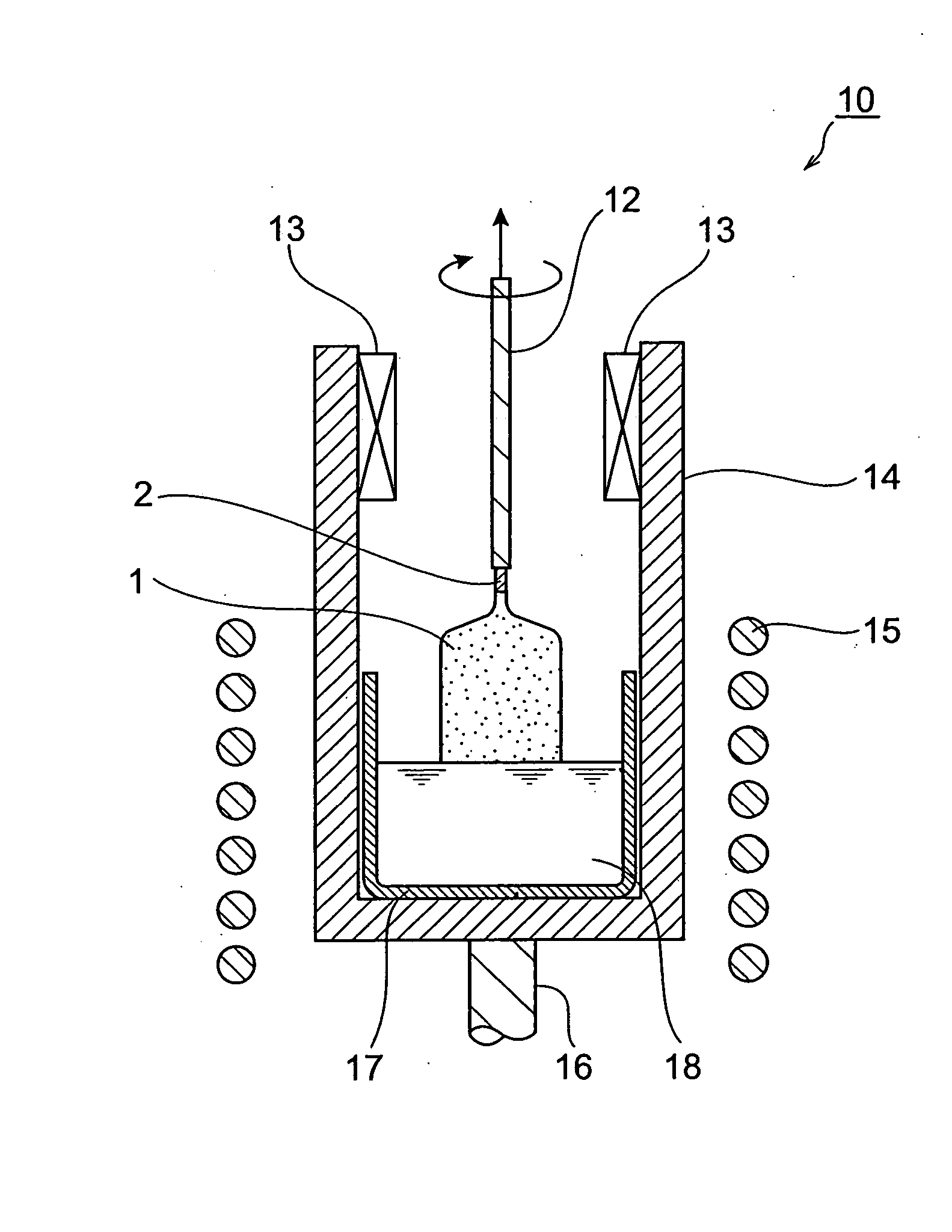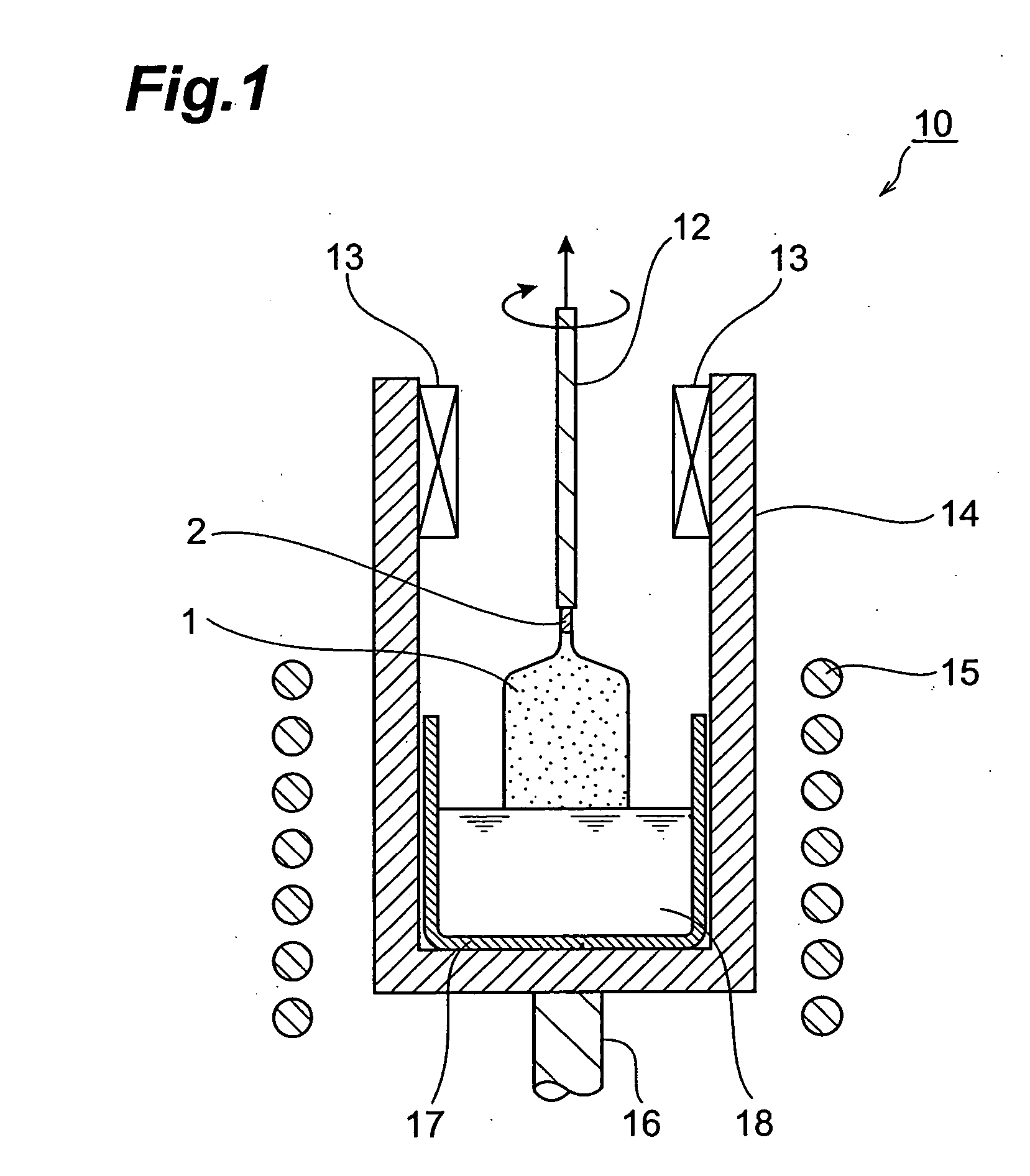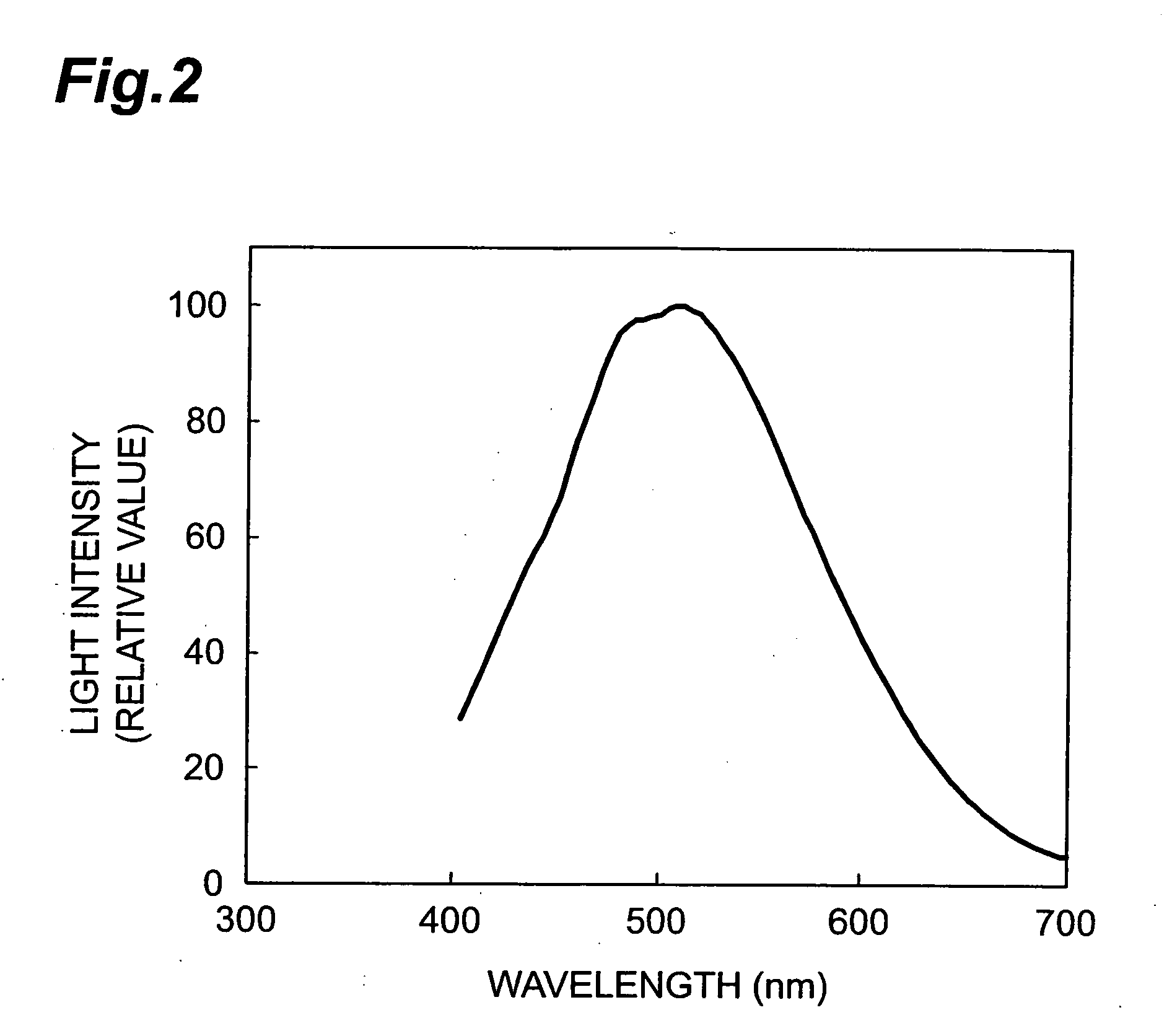Inorganic scintillator, and radiation detector and PET apparatus employing it
a scintillator and inorganic technology, applied in the direction of instruments, conversion screens, nuclear engineering, etc., to achieve the effects of short decay time, short decay time, and high light outpu
- Summary
- Abstract
- Description
- Claims
- Application Information
AI Technical Summary
Benefits of technology
Problems solved by technology
Method used
Image
Examples
example 1
[0058] In an Ir crucible having the same shape shown in FIG. 1 with a diameter of 110 mm, a height of 100 mm and a thickness of 2.5 mm there were loaded 3600.64 g of gadolinium oxide (Gd2O3, 99.99 wt % purity), 1000.64 g of lutetium oxide (Lu2O3, 99.99 wt % purity), 755.44 g of silicon dioxide (SiO2, 99.99 wt % purity) and 43.28 g of cerium oxide (CeO2, 99.99 wt % purity) as the starting materials, and 5400.00 g of the mixture was obtained. The crucible was then placed at a prescribed position of a high-frequency induction heating furnace and the mixture was heated to melting at 1950° C. or higher to obtain a melt (chemical composition of melt: Ce0.02Lu0.4Gd1.58SiO5).
[0059] Next, the end of the lifting rod to which the seed crystal was anchored was placed in the melt for crystal growth. The seed crystal used was a cut-out single crystal composed of a metal oxide containing Lu, Gd, Ce and Si, obtained by an ordinary crystal growth method. The crystal structure of the seed crystal wa...
PUM
 Login to View More
Login to View More Abstract
Description
Claims
Application Information
 Login to View More
Login to View More - R&D
- Intellectual Property
- Life Sciences
- Materials
- Tech Scout
- Unparalleled Data Quality
- Higher Quality Content
- 60% Fewer Hallucinations
Browse by: Latest US Patents, China's latest patents, Technical Efficacy Thesaurus, Application Domain, Technology Topic, Popular Technical Reports.
© 2025 PatSnap. All rights reserved.Legal|Privacy policy|Modern Slavery Act Transparency Statement|Sitemap|About US| Contact US: help@patsnap.com



